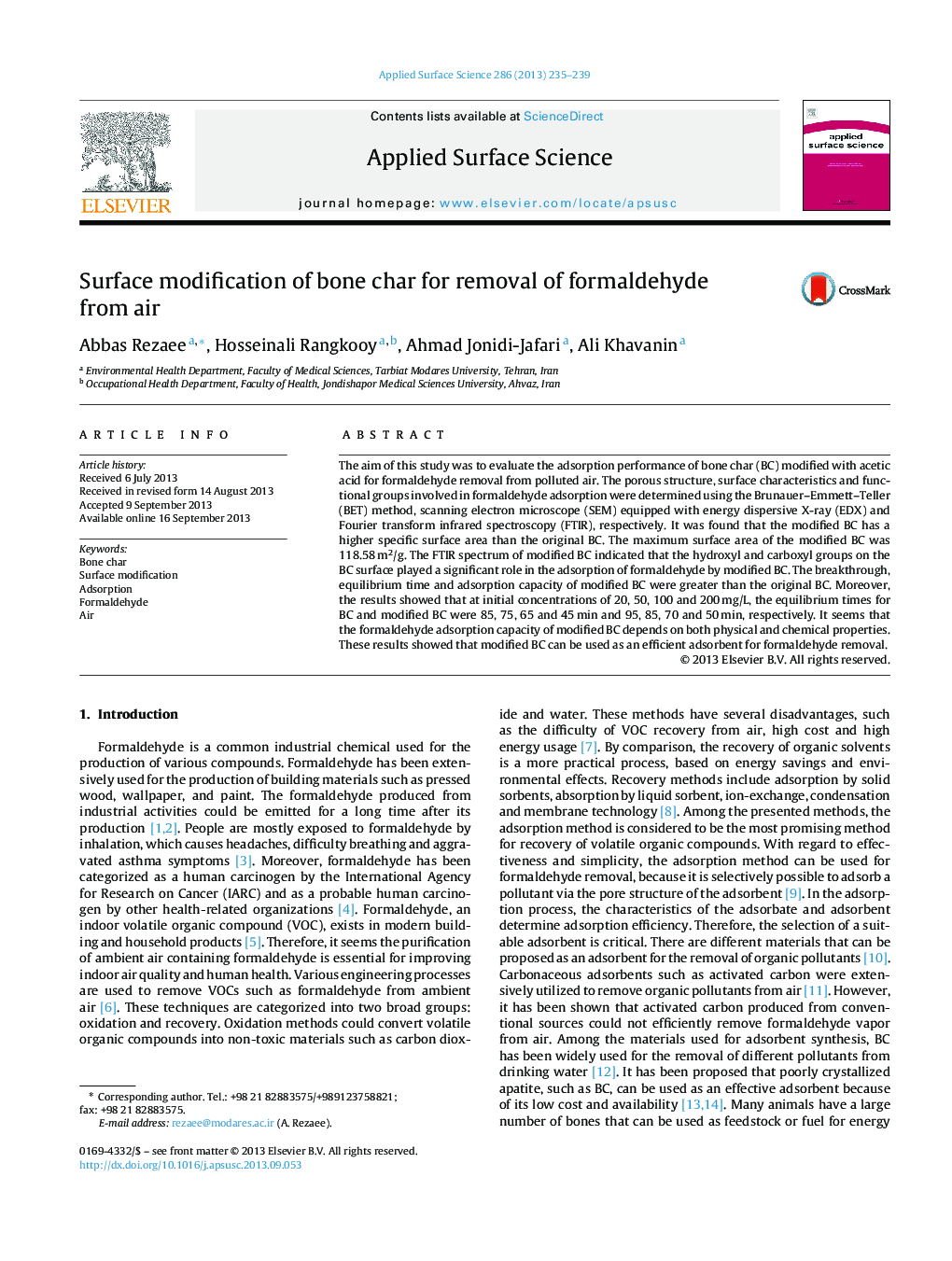| Article ID | Journal | Published Year | Pages | File Type |
|---|---|---|---|---|
| 5352100 | Applied Surface Science | 2013 | 5 Pages |
Abstract
The aim of this study was to evaluate the adsorption performance of bone char (BC) modified with acetic acid for formaldehyde removal from polluted air. The porous structure, surface characteristics and functional groups involved in formaldehyde adsorption were determined using the Brunauer-Emmett-Teller (BET) method, scanning electron microscope (SEM) equipped with energy dispersive X-ray (EDX) and Fourier transform infrared spectroscopy (FTIR), respectively. It was found that the modified BC has a higher specific surface area than the original BC. The maximum surface area of the modified BC was 118.58Â m2/g. The FTIR spectrum of modified BC indicated that the hydroxyl and carboxyl groups on the BC surface played a significant role in the adsorption of formaldehyde by modified BC. The breakthrough, equilibrium time and adsorption capacity of modified BC were greater than the original BC. Moreover, the results showed that at initial concentrations of 20, 50, 100 and 200Â mg/L, the equilibrium times for BC and modified BC were 85, 75, 65 and 45Â min and 95, 85, 70 and 50Â min, respectively. It seems that the formaldehyde adsorption capacity of modified BC depends on both physical and chemical properties. These results showed that modified BC can be used as an efficient adsorbent for formaldehyde removal.
Related Topics
Physical Sciences and Engineering
Chemistry
Physical and Theoretical Chemistry
Authors
Abbas Rezaee, Hosseinali Rangkooy, Ahmad Jonidi-Jafari, Ali Khavanin,
